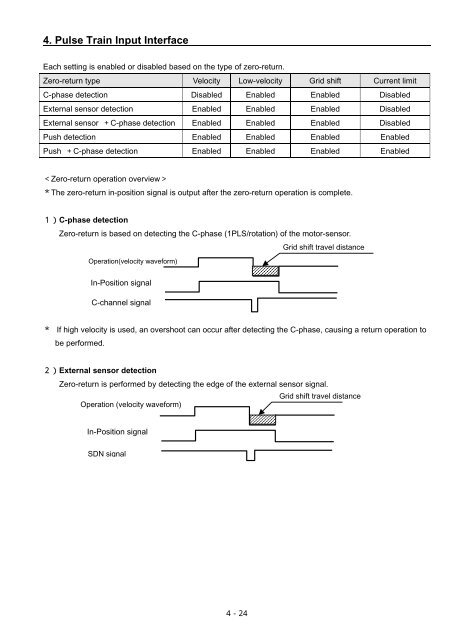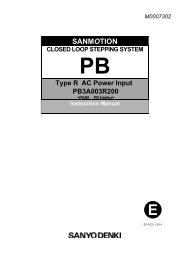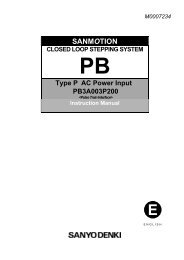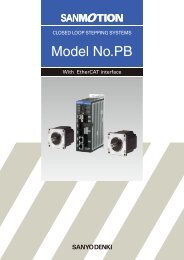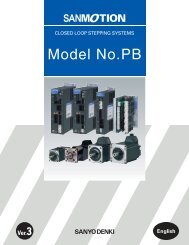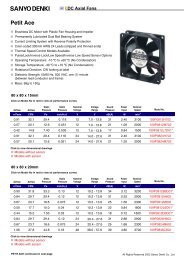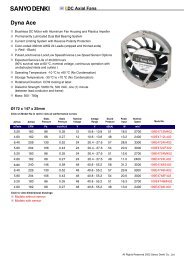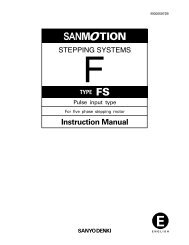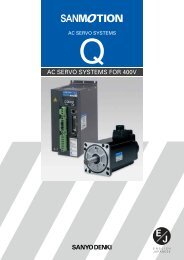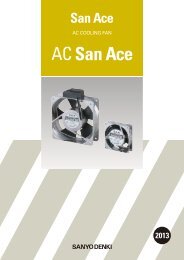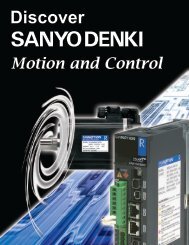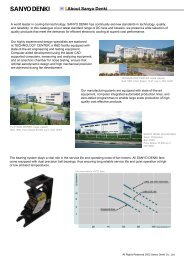You also want an ePaper? Increase the reach of your titles
YUMPU automatically turns print PDFs into web optimized ePapers that Google loves.
4. Pulse Train Input Interface <br />
Each setting is enabled or disabled based on the type of zero-return.<br />
Zero-return type Velocity Low-velocity Grid shift Current limit<br />
C-phase detection Disabled Enabled Enabled Disabled<br />
External sensor detection Enabled Enabled Enabled Disabled<br />
External sensor C-phase detection Enabled Enabled Enabled Disabled<br />
Push detection Enabled Enabled Enabled Enabled<br />
Push C-phase detection Enabled Enabled Enabled Enabled<br />
Zero-return operation overview<br />
The zero-return in-position signal is output after the zero-return operation is complete.<br />
C-phase detection<br />
Zero-return is based on detecting the C-phase (1PLS/rotation) of the motor-sensor.<br />
Grid shift travel distance<br />
Operation(velocity waveform)<br />
In-Position signal<br />
C-channel signal<br />
If high velocity is used, an overshoot can occur after detecting the C-phase, causing a return operation to<br />
be performed.<br />
External sensor detection<br />
Zero-return is performed by detecting the edge of the external sensor signal.<br />
Grid shift travel distance<br />
Operation (velocity waveform)<br />
In-Position signal<br />
SDN signal<br />
424


